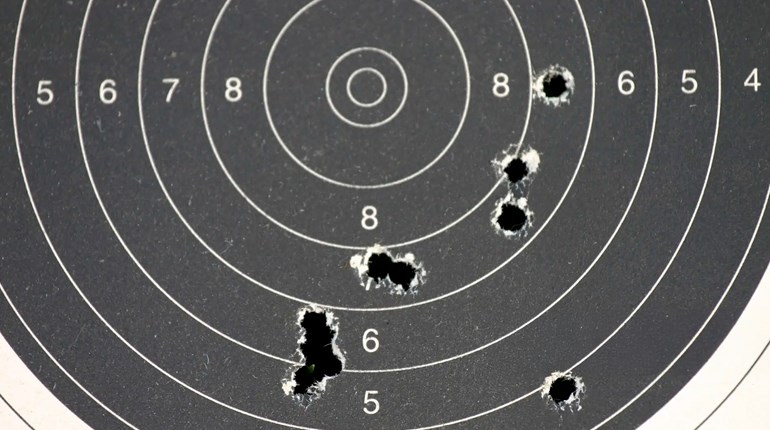
Shoothouse scenarios at training facilities don’t exist to teach you how to clear a house on your own. Rather, they teach the importance of movement, particularly movement to solid cover.
The defensive shooter is well advised to keep in mind that in virtually every situation, the criminal gets to make the first move. The bad guy has to produce a weapon and start to engage before we can respond with deadly force. This pretty well puts us in a position of having to play catch up if we expect to survive.
After a person develops some skills in the basics of defensive gun handling, it is time to work on techniques that take the initiative away from the criminal, or at least minimize the effectiveness of his attack. In essence, it is a good idea to do things that surprise the attacker and cause them to go to Plan B, assuming they have one.
The more we can confuse our attacker, the better are our chances for survival. Here are two techniques to consider in taking the initiative away from the criminal.
The best movements are to either side or diagonally. Take big, quick steps and really cover some ground. Do it fast, while you are drawing your defensive handgun.
The first of these is movement. The criminal may be expecting the citizen to simply freeze and surrender. He or she may not have even considered the fact that the citizen will suddenly start moving and fighting back. Any time we can confuse the enemy, we are on the path to victory.
It has been said that distance is your friend. And, while I agree with that, I think it is usually a mistake to create that distance by backing up.
First of all, a person does not have to back up very far before they stand a good chance of tripping over something and falling down. I’ve seen this happen on a fairly clean, square range. And you can imagine what would happen in the average home.
Not to suggest that none of us keep a clean and tidy home, but just look around at the room that you are in right now. As a general rule, I would say a person should only back up if that is the only avenue to create movement.
The other problem with simply backing up is that, if the crook is armed with a firearm, you haven’t caused him to have to realign his sights. If you move straight back, his sights are still essentially on you and if he fires a shot it will probably hit you somewhere.
The best movements are to either side or diagonally. Take big, quick steps and really cover some ground. Do it fast, while you are drawing your defensive handgun. A fast move toward him, but on the diagonal, might really be an unexpected response because the crook might least expect that you will come at him.
Think about the various, possible moves and practice them, making sure that your feet don’t get tangled up. And, of course, you should also practice shooting on the move. Incorporating shooting and moving is not easy. It must be thought out and practiced. You want it to happen so quickly that it will surprise the attacker. If your local shooting range doesn’t allow this sort of practice, you can work a lot of it out in your dry practice at home.
While considering movement, it is always a good idea to remember one of the best places to move is to cover, which is defined as something that can be reasonably expected to stop bullets. Examine your home, workplace and surroundings, and identify furniture and other objects in each area that could potentially stop bullets. Part of being in Condition Yellow (relaxed awareness) is continually identifying nearby objects that can be used as cover as we go about the routine of our lives.
Of course, we can’t always be assured a certain object will stop a bullet in its flight toward us. We don’t usually know what caliber handgun the criminal is using, or the type of bullet, factors that dictate the amount of penetration.
That sofa you just jumped behind might well stop a .22 LR, but will it stop a .44 Mag.? And, what is cover for a handgun might not serve well if the attacker has a rifle.
Well, no one said that life was going to be fair. We just have to do the best that we can. If I am thinking of using a nearby automobile as cover, I want to be behind the front end of the car, with the engine block between me and the bad guy, if at all possible.
On the other hand, the closest cover may be marginal cover. It may not stop a bullet, but it might slow it down and, thus, not cause as severe a wound should it impact you. That nearby sheetrock wall may not stop the bullet, but sheetrock is really good about filling up the cavity in a hollow point and adversely affecting its performance and potential damage. But, it’s not ideal cover by any means.
The use of movement and cover are important techniques for the defensive shooter to consider and practice. We do what we can to avoid a violent conflict but, when it is about to be visited upon us, we need to move quickly and aggressively. That sort of response takes the initiative away from the crook and causes them to take the time to figure out what to do next. By confusing the enemy, you have a greater opportunity for victory.




































